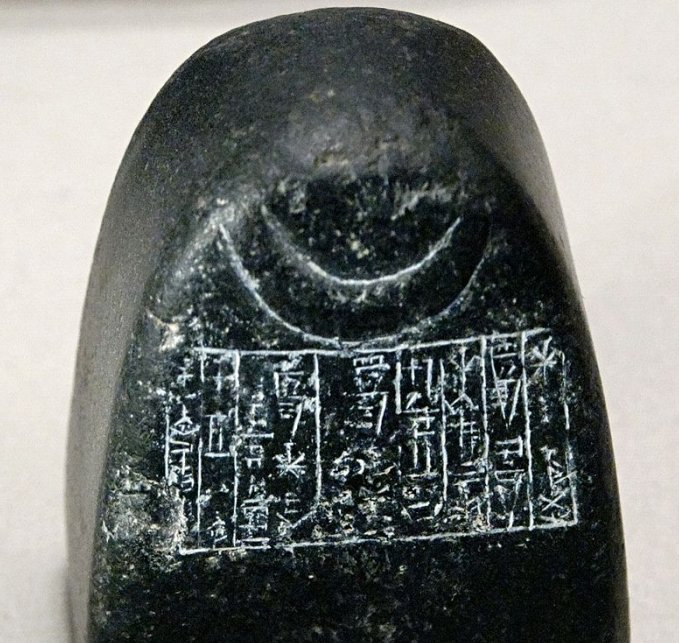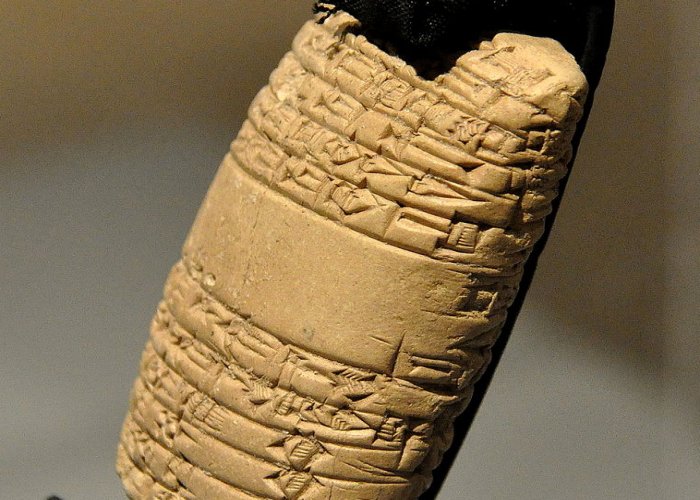Divine Shulgi Of Ur: Influential, Long-Ruling King, Conqueror And Native Akkadian Speaker In Five Languages
A. Sutherland - AncientPages.com - Shulgi (2095-2048 BC) was the son of Ur-Nammu and his successor. With Ur-Nammu started the famed Third Dynasty of Ur and the prosperous so-called Ur III Period.
During his long (48-year) reign, Shulgi strengthened and expanded the state created by his father. He reorganized the already existing system and strengthened its international prestige, making it real power.
Foundation figure of king Shulgi of Ur, carrying a basket. Metalwork-Sculpture. Image credit: Metropolitan Museum of Art - CC0
Not only epics and myths but also hymns played a very important role in Sumerian literature. They honored prominent figures and one of them was Shulgi, the second ruler of the Third Dynasty of Ur (circa 2094-2047 BC).
He boasted about his successes and he did it with good reason.
Shulgi was a son of Ur-Nammu, a founder of the Third Dynasty of Ur, and a Sumerian king who reigned about 2112-2095 BC. Like his father, Ur-Nammu, he was a great politician, and also an excellent commander. Shulgi’s 48-year-long reign contributed to important achievements.
Achievements Of Shulgi Were Significant
At the end of 3000 BC, new leaders from Ur, the 3rd dynasty took power in the region. One was Ur-Nammu, the other was his son Shulgi.
Like his father, Shulgi can be credited with the building of ziggurats and great temples in cities of Mesopotamia.
He introduced standard weights and measurements and encouraged trade on safe roads where people could move between cities, without fear of being attacked and robbed. Every tax that was paid was registered on clay tablets by scribes; many of these tablets were found well-preserved. The country’s territory increased significantly, giving it international prestige.
In the beginning, the kingdom, Shulgi inherited was not large and included only central and southern Mesopotamia. The small kingdom has usually difficulties defending itself against the large ones. Therefore, Shulgi began his reign with a policy of conquest (focusing on Elam and the mountains of Zagros) and achieved a number of successes. He appointed a large army.
Shulgi Boasted Much About His Abilities And With Good Reason
As the most influential ruler of Ur III king, Shulgi was a native Akkadian speaker who was fluent in five languages like Elamite, Sumerian, Hurrian, Amorite, and even Meluhhan (Dravidian). He was trained as a scribe and organized schools for scribes. He was a self-confident ruler who declared himself a divinity and established a tradition of royal praise for himself in many hymns.
A half-mina weight (248 g.), bearing the name of king Shulgi. Image credit: Rama - CC BY-SA 2.0 FR
“Shulgi boasts that he hunts lions and serpents in steppe…. without the aid of a net or enclosure… He claims to be so fast on his feet he can catch a gazelle on the run..” (Kramer N. S.)
Usually, people wrote hymns for the gods, but Shulgi wrote a hymn to honor himself.
In “The Sumerian World,” Harriet Crawford writes that “by some accounts, in 2088 BC, during what is known as the King’s Run, documents show that Shulgi claimed that during a celebration of eshesh, he ran the distance of the parade (200 miles round-trip) from Nippur to Ur and back.
“That my name be established until distant days and that it leaves not the mouth of men, that my praise be spread wide in the land; I, the runner rose in my strength… and from Nippur to Ur I resolved to travel…”
"My black-headed people marveled at me" he wrote.
The problem is that Nippur was at a distance of 100 miles from Ur. Shulgi claimed that he runs 100 miles and then he runs back home again. All that happened in one day and during a storm. Did Shulgi really run 200 miles in the stormy weather or was it only a way to glorify himself?
This tablet glorifies King Shulgi and his victories on the Lullubi people and it mentions the modern city of Erbil and the modern district of Sulaymaniyah. 2111-2004 BCE. The Sulaymaniyah Museum, Iraq. Image credit: Osama Shukir Muhammed Amin FRCP(Glasg) - CC BY-SA 4.0
We don't know, however, Kramer refers to Shulgi as "the first long-distance running champion."
We can only say that even if his marathon race was only boasting, Shulgi had many other impressive achievements that were praised.
Shulgi Involved In Many Military Campaigns
He was at war on a regular basis; he clashed with Hurrian invaders, built reinforcements to keep the Amorites out. At the same time, he was actively involved in the interior affairs of his country.
He arranged several royal expeditions in three large campaigns and penetrated several hostile regions, eventually covering the entire area of western Zagros. He used both, the military supremacy of Ur and diplomatic means, depending on the circumstances. However, he preferred diplomatic actions, if possible.
After 48 years of rule, Shulgi left the kingdom three times wider, strong, with bounded borders and with a well-functioning centralized administrative system.
Shulgi And His Laws
It is said that Shulgi was concerned about the poor and weak people in his great kingdom. One of his inscriptions says “I did not deliver the orphan to the rich. I did not deliver the widow to the mighty. I got rid of hatred and violence and established justice in the land.”
He put together laws on clay tablets, but unfortunately only the first 37 of these earliest written laws - survived. He named different crimes and punishments for them. By his laws, he discouraged people from taking justice in their own hands. Later, Hammurabi appeared with his famous code. Hammurabi's' laws survive because they were recorded on stone, Shulgi's on the other hand, used only clay tablets.
Written by – A. Sutherland - AncientPages.com Senior Staff Writer
Copyright © AncientPages.com All rights reserved. This material may not be published, broadcast, rewritten or redistributed in whole or part without the express written permission of AncientPages.com
Expand for referencesReferences:
Kramer N. S. In the World of Sumer
Freeman, H. Sumerians
Kramer, Samuel Noah. "Shulgi of Ur: A Royal Hymn and a Divine Blessing." The Jewish Quarterly Review 57 (1967): 369-80.
Barjamovic G. Ryholt K. Problems of Canonicity and Identity Formation in Ancient Egypt and Mesopotamia
More From Ancient Pages
-
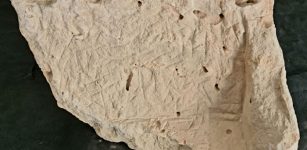 3,500-Year-Old Stone Inscribed With A Curse Against The City’s Governor Discovered In Jerusalem
Archaeology | Jul 13, 2022
3,500-Year-Old Stone Inscribed With A Curse Against The City’s Governor Discovered In Jerusalem
Archaeology | Jul 13, 2022 -
 On This Day In History: British Forces Captured Gibraltar – On August 3, 1704
News | Aug 3, 2016
On This Day In History: British Forces Captured Gibraltar – On August 3, 1704
News | Aug 3, 2016 -
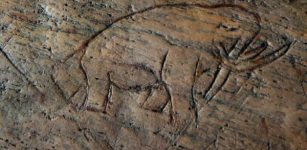 Controversial Study Of Ancient DNA Could Re-Write History Of South Florida And Prove Humans And Huge Prehistoric Animals Co-Existed
Archaeology | Sep 23, 2014
Controversial Study Of Ancient DNA Could Re-Write History Of South Florida And Prove Humans And Huge Prehistoric Animals Co-Existed
Archaeology | Sep 23, 2014 -
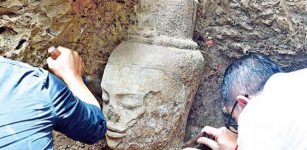 Sandstone Head Of A Bodhisattva Discovered Near Ta Nei Temple
Archaeology | Oct 15, 2019
Sandstone Head Of A Bodhisattva Discovered Near Ta Nei Temple
Archaeology | Oct 15, 2019 -
 Was Tintagel Castle A Fortress Used By Iconic Hero King Arthur?
Ancient Mysteries | Mar 12, 2016
Was Tintagel Castle A Fortress Used By Iconic Hero King Arthur?
Ancient Mysteries | Mar 12, 2016 -
 Stribog – Slavic God Of Winds Associated With Destruction, Harvest, Evil And Good
Featured Stories | Jul 1, 2019
Stribog – Slavic God Of Winds Associated With Destruction, Harvest, Evil And Good
Featured Stories | Jul 1, 2019 -
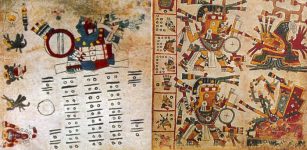 Ancient Codex Cospi: Intriguing Pre-Columbian Ritual Manuscript From Central Mexico
Featured Stories | Aug 10, 2017
Ancient Codex Cospi: Intriguing Pre-Columbian Ritual Manuscript From Central Mexico
Featured Stories | Aug 10, 2017 -
 People Of India In Focus: Where Did They Come From?
Civilizations | May 11, 2017
People Of India In Focus: Where Did They Come From?
Civilizations | May 11, 2017 -
 Ganesha: Elephant-Headed God Of Knowledge, Learning, Literature And Scribe Of The Mahabharata
Featured Stories | Aug 17, 2016
Ganesha: Elephant-Headed God Of Knowledge, Learning, Literature And Scribe Of The Mahabharata
Featured Stories | Aug 17, 2016 -
 Ancient Artifacts Hidden Beneath The Ice In Danger As Glaciers Are Melting
Archaeology | Oct 19, 2020
Ancient Artifacts Hidden Beneath The Ice In Danger As Glaciers Are Melting
Archaeology | Oct 19, 2020 -
 2000-Years Old Road Was Discovered In Manisa Province,Turkey
Archaeology | Aug 14, 2017
2000-Years Old Road Was Discovered In Manisa Province,Turkey
Archaeology | Aug 14, 2017 -
 Never-Before-Seen Structures Of King Herod’s Magnificent Palace Herodium Unveiled
Archaeology | Dec 11, 2020
Never-Before-Seen Structures Of King Herod’s Magnificent Palace Herodium Unveiled
Archaeology | Dec 11, 2020 -
 On This Day In History: The Battle Of The Nile Concludes In A British Victory – On August 2, 1798
News | Aug 2, 2016
On This Day In History: The Battle Of The Nile Concludes In A British Victory – On August 2, 1798
News | Aug 2, 2016 -
 New Paintings And Details Uncovered In The Egyptian Temple Of Esna
Places | Oct 22, 2024
New Paintings And Details Uncovered In The Egyptian Temple Of Esna
Places | Oct 22, 2024 -
 Ancient DNA Reveals The Earliest Evidence Of The Last Massive Human Migration To Western Europe
DNA | Jul 24, 2023
Ancient DNA Reveals The Earliest Evidence Of The Last Massive Human Migration To Western Europe
DNA | Jul 24, 2023 -
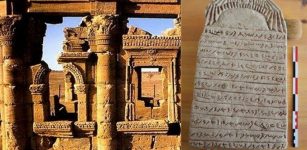 Ancient Napata And Meroe Kingdoms Reveal Secrets Of Queen Tiye And Goddess Maat
Archaeology | Mar 7, 2018
Ancient Napata And Meroe Kingdoms Reveal Secrets Of Queen Tiye And Goddess Maat
Archaeology | Mar 7, 2018 -
 World’s Oldest Dictionaries Are 4,500-Year-Old Cuneiform Tablets Discovered In Ebla
Ancient History Facts | Aug 19, 2016
World’s Oldest Dictionaries Are 4,500-Year-Old Cuneiform Tablets Discovered In Ebla
Ancient History Facts | Aug 19, 2016 -
 On This Day In History: Earthquake In Pompeii, Italy Occurred – On Feb 5, 62 AD
News | Feb 5, 2017
On This Day In History: Earthquake In Pompeii, Italy Occurred – On Feb 5, 62 AD
News | Feb 5, 2017 -
 Mysterious Unknown Beings Who Walked The Earth With Humans
Ancient Mysteries | Sep 15, 2020
Mysterious Unknown Beings Who Walked The Earth With Humans
Ancient Mysteries | Sep 15, 2020 -
 Discovery In Alabama Reveals Evidence Of Skull Surgery In North America Thousands Of Years Earlier Than Previously Thought
Archaeology | Apr 2, 2022
Discovery In Alabama Reveals Evidence Of Skull Surgery In North America Thousands Of Years Earlier Than Previously Thought
Archaeology | Apr 2, 2022


